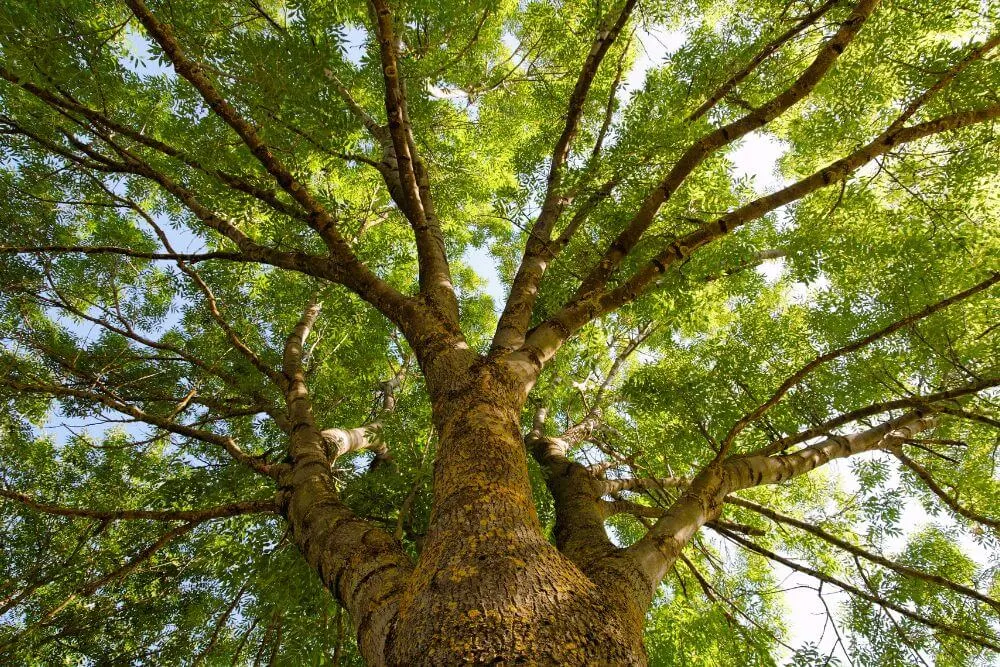
Table of Contents
Irish Native Trees
Trees have long played a very important role in Ireland. Through the ages, native Irish trees have supported local biodiversity, as well as the people living on the island of Ireland.
Native Irish woodlands have provided a wealth of resources that were needed for society to expand and develop. From the charcoal needed to drive the developments in the Iron Age, to the timber needed for the construction of Ireland’s first roads and towns, Irish woodlands have been an invaluable resource.
This is not to mention the very important mythological and spiritual connections with trees that can be traced back to at least the time of the Celts.
There is renewed interest in native Irish trees and their importance for biodiversity. Many people are now more aware and critical of the impacts of non-native monoculture forestry plantations. This article will help you learn about Ireland’s native trees, their interesting history and important habitats.
What are native Irish trees?
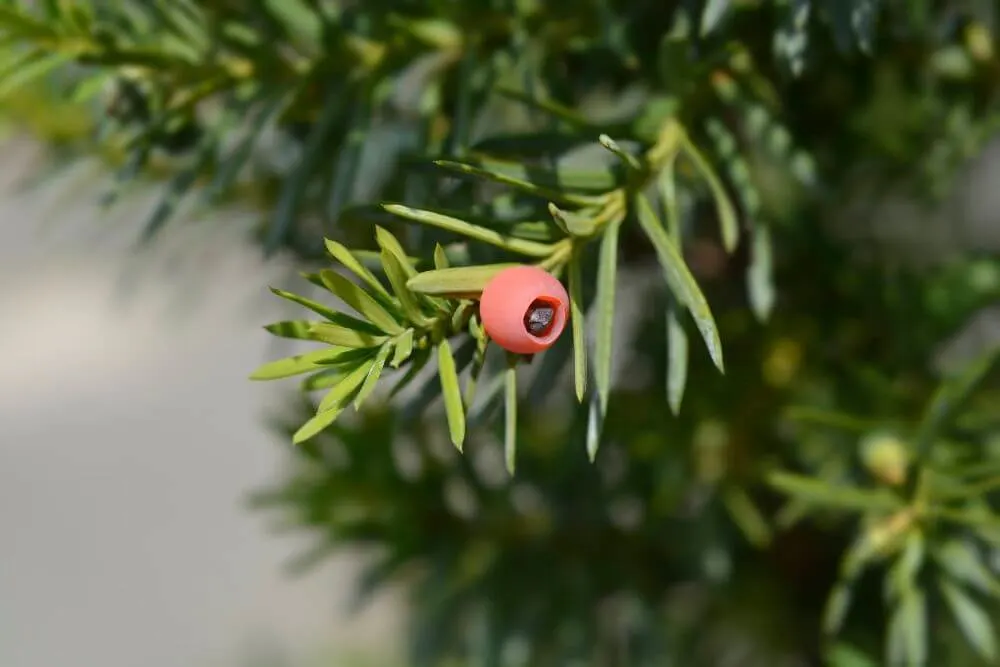
Native Irish trees are the tree species that arrived in Ireland without the assistance of humany many thousands of years ago.
Pollen analysis of peat cores is one way in which to discover when a tree species was present in a certain area in the past and determine what is truly native.
How many native Irish trees are there?
In total, there are 28 native Irish tree species, including some of the more common trees like Oak, Hazel, Birch, Rowan, Scots Pine and Willow.
List of Native Irish Trees
- Common Alder
- Arbutus (or Strawberry Tree)
- Ash
- Aspen
- Downy Birch
- Silver Birch
- Blackthorn (or Sloe)
- Cherry Bird
- Wild Cherry
- Crab Apple
- Elder
- Guelder Rose
- Hawthorn (or Whitethorn)
- Hazel
- Holly
- Juniper
- Pedunculate Oak
- Sessile Oak
- Rowan (or Mountain Ash)
- Scots Pine
- Spindle
- Whitebeam
- Eared Willow
- Goat/Pussy Willow
- Grey/Rusty Willow
- White Willow (Golden Weeping)
- Wych Elm
- Irish Yew
What are non-native Trees in Ireland?
The Beech, sycamore, horse chestnut and sweet chestnut are some non native Irish trees (there are many more!). They are introduced species that have become naturalized over time.
Trees Native to Ireland
Arbutus (or Strawberry Tree)
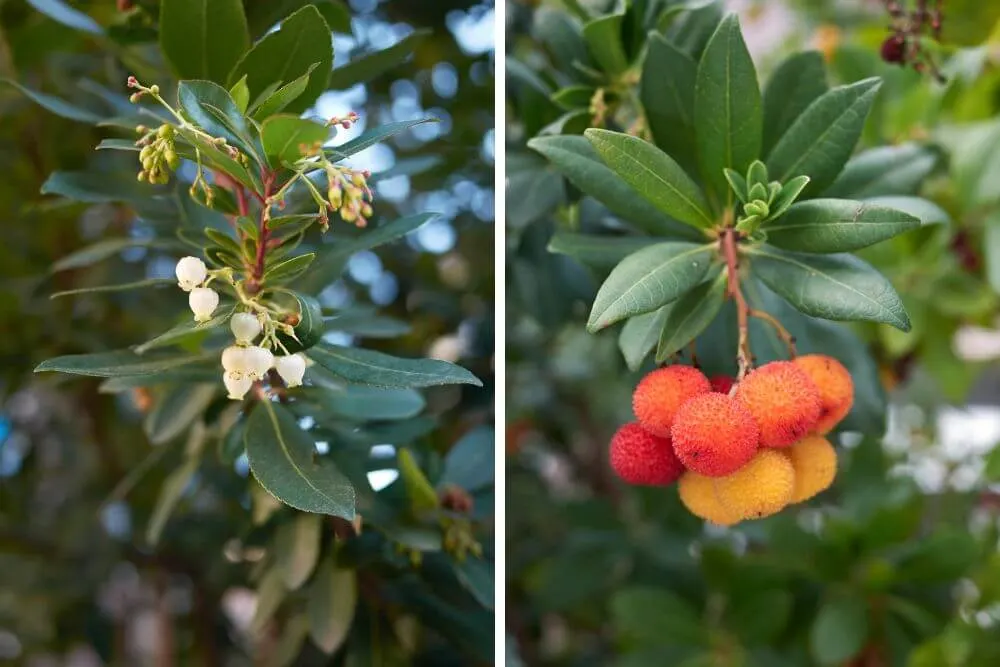
Irish Name: Caithne
Latin Name: Arbutus unedo
The Arbutus unedo is a native Irish tree that is more typically found in Mediterranean regions (it features in the logo of the City of Madrid). It is one of 15 Lusitanian flora, which has a restricted distribution in the Iberian Peninsula and in southwest Ireland.
In Ireland, it can be found mostly in parts of Kerry (especially in and around Lough Leane, Killarney), some areas of West Cork around Glengarriff and in the area of Lough Gill of County Sligo.
The strawberry-like fruit of the tree are the source of its other well known name “The Strawberry Tree”. It is an evergreen tree with a kind of bark that looks a little “feathery”. It typically grows up to about 10 m, but occasionally as high as 15 m.
Due to its declining populations in Ireland due to a deterioration in habitat quality, this species is listed as Near Threatened on the Irish Red List Category.
Read more about some interesting theories linking early Spanish miners to the possible deliberate introduction of the Strawberry tree.
Juniper
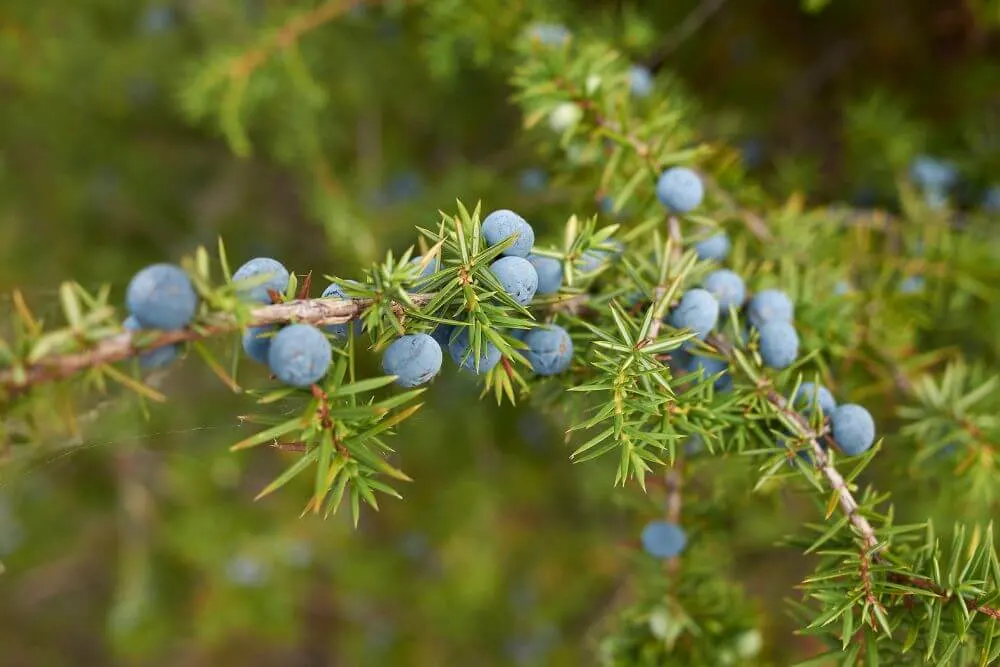
Irish Name: Aiteal
Latin Name: Juniperus communis
Along with Yew and Scots Pine, Juniper is one of Ireland’s few native conifers. Its distribution in Ireland is most frequently in the north west and west of the country.
This plant often grows close to the ground (prostate shrub), but can also grow as an erect form up.
Male and female flowers grow on separate plants and while the plant produces berry-like fruits, they are in fact the female seed cones containing between one and six seeds that just happen to be very fleshy and the scales have merged.
The bluey-black berries of Juniper are one of the botanicals often used to flavor the Dutch invention, gin. They are also used in sauces for strong tasting meats, including game.
Oak
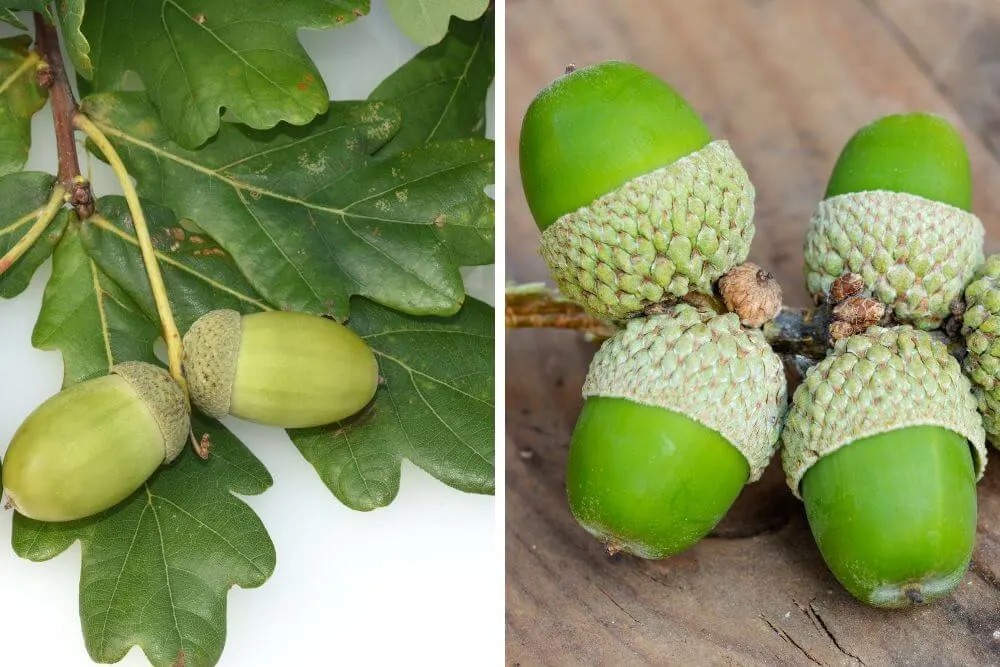
Pedunculate Oak
Irish Name: Dair ghallda
Latin Name: Quercus robur
Sessile Oak
Irish Name: Dair ghaelach
Latin Name: Quercus petraea
Ireland has two native oak species: Pedunculate oak and Sessile Oak.
Pedunculate oak woodlands are found for example in Charleville Forest near Charleville Castle in County Offaly. The is the home of the “King Oak”, a particularly ancient tree, several hundreds of years old). Sessile oak woodlands are found around Killarney, County Kerry, Glenveagh, County Donegal and the Glen of the Downs in County Wicklow.
There are many differences between the two oak species. The most obvious being the differences in the stalks of the leaves and acorns.
The leaves of the Pedunculate Oak (Quercus robur) tend to appear more than that of the Sessile Oak (Quercus petraea). On the Pedunculate Oak, the stalks on the leaves are very small or non-existent, while there are stalks on the acorns.
The reverse is true for the Sessile Oak, the leaves have little stems and the acorns are stalkless and connected directly to the branch.
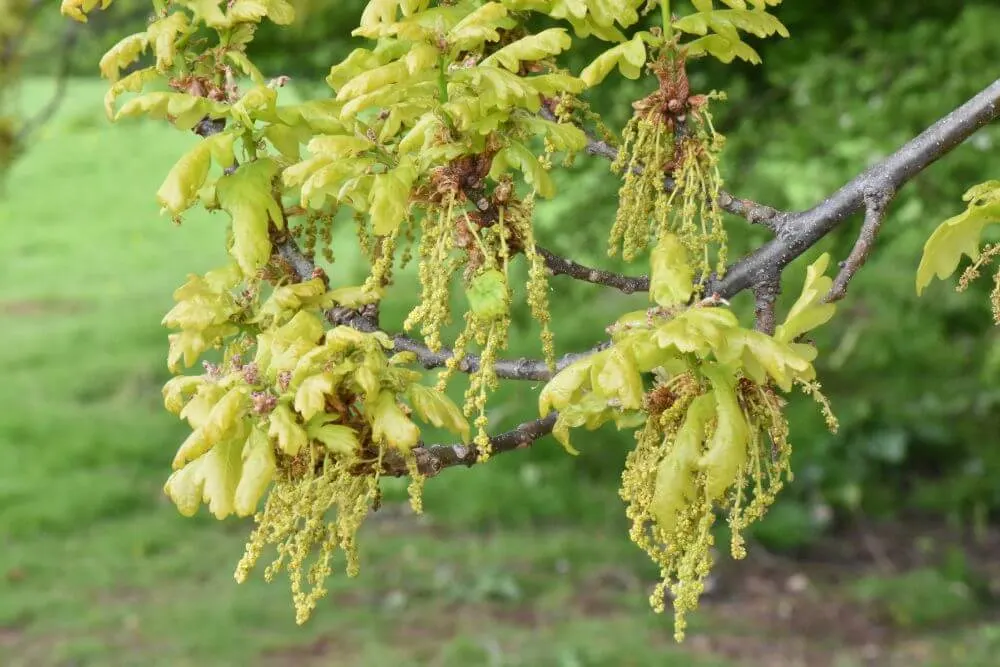
Oak trees can live to be up to 500 years old, although there are few specimens of this age in Ireland. Their longevity is particularly important for biodiversity and is home to many species of birds, fungi, and lichens. Oak trees support more insect diversity than other native Irish trees.
These Oak trees also mast, which means that they will produce a bumper crop of acorns every few years as part of a reproduction strategy to outwit its predators.
Of these deciduous trees Ireland once had very many. Oaks have played a central position in Irish mythology. Oak is majestic in every season and has long been seen as the king of the forest, hence the association with kingship.
For more information about oak trees and the strong Celtic connection, read the Celtic Tree of Life and the Celtic Symbol for Strength, which is thought to have been an oak tree.
Irish Yew
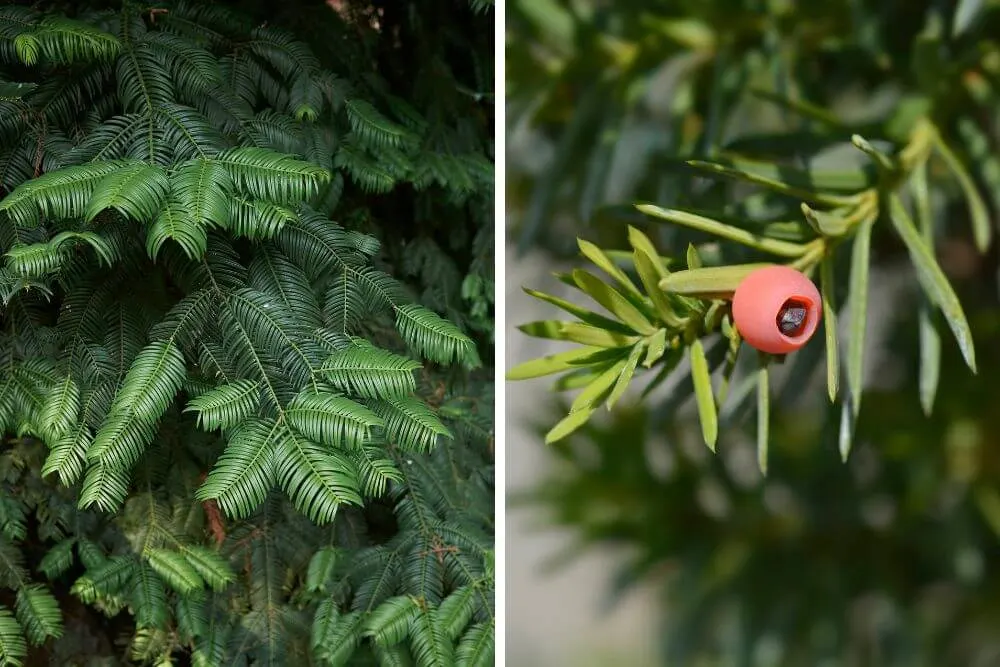
Irish Name: Iúr
Latin Name: Taxus baccata ‘Fastogiata’ Irish Yew
Latin Name: Taxus baccata (Common Yew)
This is an evergreen conifer that has dark green leaves and often red berries (take note that the leaves and the berries are poisonous).
The Silken Thomas Tree found on the grounds of St. Patrick College in Maynooth, County Dublin may well be the oldest tree in Ireland. Analysis shows that it may be up to 800 years old.
The Irish Yew is most likely a variation from the common Yew (Taxus baccata). First discovered in 1780 in County, the Irish Yew differs from the common Yew as the needles tend to grow around the stem and not in row along both sides. It also tends to grow in a more vertical manner, whereas the Common Yew spreads out more as it grows.
All of the Irish Yew trees that have since been planted around the world are thought to have descended from the Florence Court Yew specimen.
There is one native yew woodland in County Kerry, which is a Special Area of Conservation under EU Law.
Yew trees are often associated with death. They have often been planted in and around graveyards. One reason suggested for this is to stop people leaving their cattle to graze in the area (the leaves and fruit are toxic).
Mayo in Ireland has a strong connection to the yew tree. Its name Mayo comes from the Irish, Maigh Eo, which translates to “Plain of Yew Trees” and the Mayo coat of arms has nine yew trees on it.
Native Irish Fruit Trees
Crab Apple
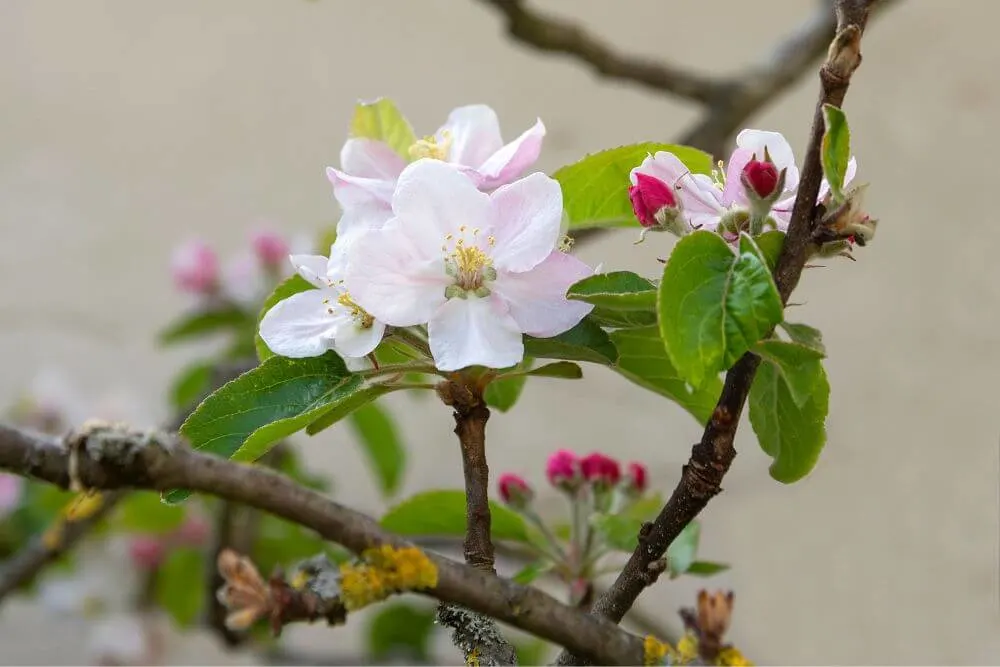
Irish Name: Crann fia-úll
Latin Name: Malus sylvestris
Crab apple is usually a small tree type, but can grow up to 10 m and can live to the ripe old age of 100 years, given the right conditions. It is found throughout Ireland, often near old woodland, but it is also used in hedging.
The blossoms of this tree are typically white or sometimes pink in color and have a sweet fragrance. It is worth noting that there is quite a lot of natural variation in crab apples themselves, some can be red with white spots, while others are green.
Crab apple is a good host for the parasitic mistletoe. The latter was a very sacred plant for the Celtic Druids. (Read more about it in the Celtic Tree of Life.)
Elder
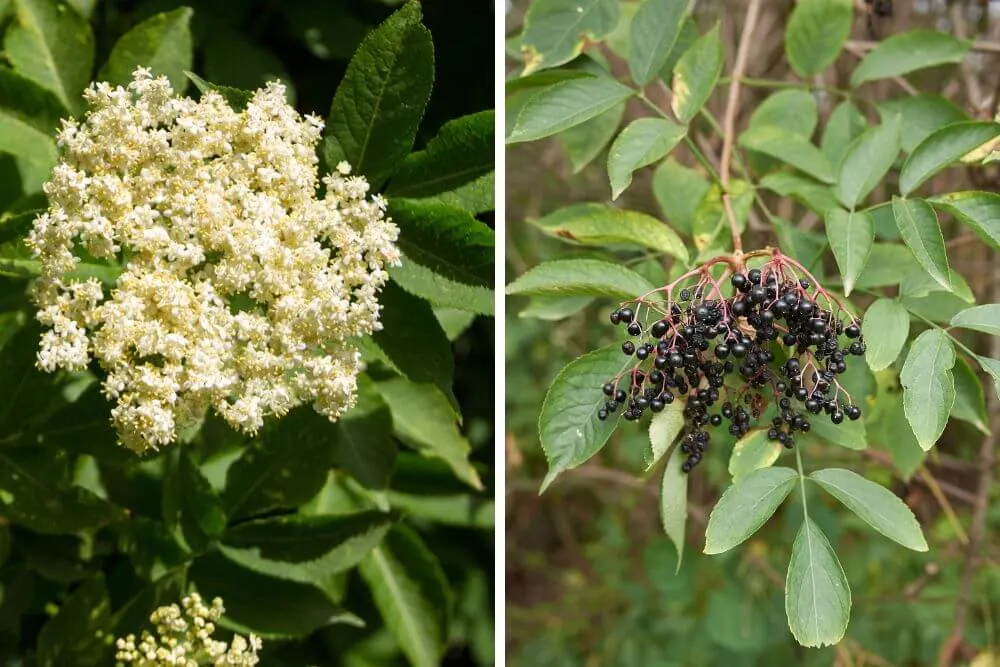
Irish Name: Tromán
Latin Name: Sambucus nigra
This tree is also known as the “Bour Tree” depending on which part of the country you come from.
The flowers and berries of Elder are good pollen and food source for wildlife (the trees are sometimes found around badger sets, which might make one think that this animal in particular is quite partial to the berries).
Additionally, there are many household uses for Elder. The flowers can be used to make elderflower cordial, (which is wonderfully refreshing on a warm summer day). In autumn, the berries can be made into syrups and jams. There is also a strongly held belief that some studies now confirm that it may help fight off colds.
The branches of Elder have also been used to make pipe instruments and smoking pipes. Some chemical properties found in Elder repel insects, which is why it was often planted around milking parlors in the past.
Wild Cherry
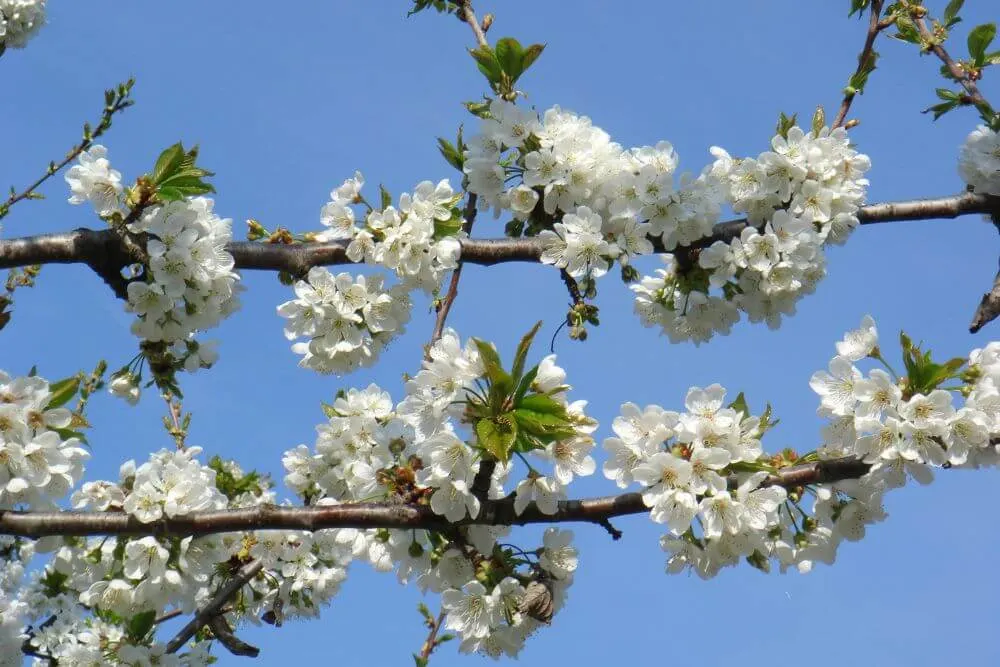
Irish Name: Gean or Crann silíní fiáin
Latin Name: Prunus avium
This tree, which is often known as the Gean Tree, is found in woodland areas and hedgerows across Ireland and is easiest to spot in spring, when in full white blossom. They can grow to a height of about 20 m (ca. 65 ft) in Ireland.
In many respects it is very similar to the other Irish native cherry tree, the Bird Cherry (Prunus padus). One distinctive difference is that wild cherries are red in color when they are ripe, while the berries of the bird cherry are black.
Irish cherries tend not to be particularly sweet, which is in part due to the lack of heat needed to produce sugars in the summers.
Irish Rainforest
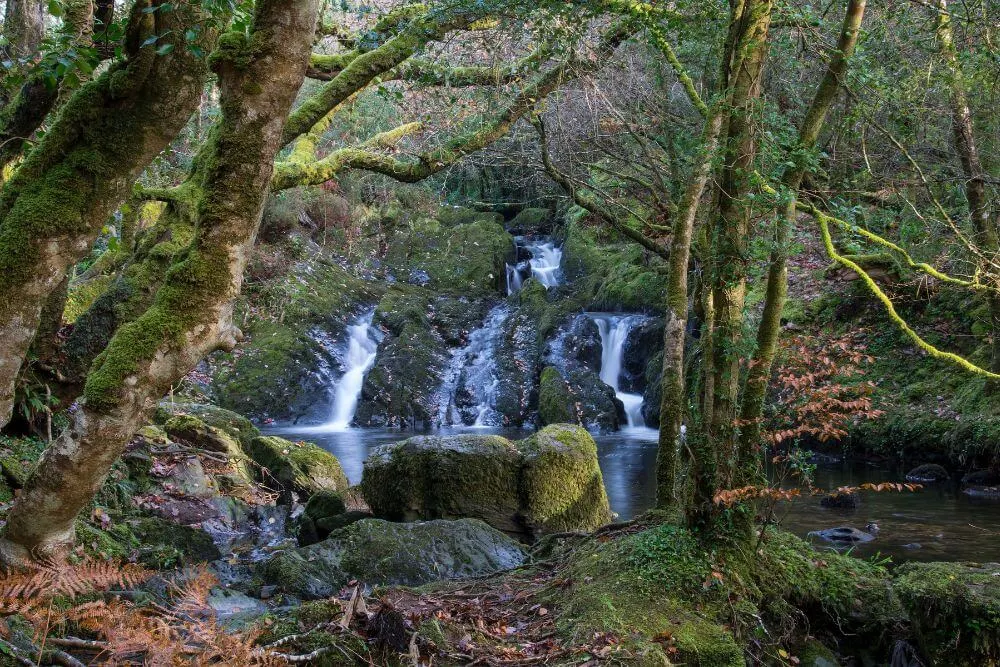
When one thinks of a rainforest, one usually thinks of the tropics. Ireland is very far from the tropics, but it has its own temperate rainforest. This is a little known fact, that many people in Ireland (and beyond) are totally unaware of.
Temperate rainforests are found in small pockets of temperate zones around the world with oceanic moist climates.
The temperate rainforests found in Ireland and Britain are home to Atlantic Oakwood Forests, sometimes known as the “Caledonian Forests” or sometimes even “Celtic forests”.
At one point after the last ice age in Ireland trees covered about 80% of the land and were mostly composed of species found in the damp climate ocean forests.
The Irish rainforest is a saturated habitat home with species of tree such as oak, hazel, ash and the lovely alder, with its attractive reddish catkins. This wet environment is an ideal habitat for the many species of mosses, lichens and ferns that grow there.
If you are interested in learning more about this incredibly important, yet highly undervalued ecosystem, Hometree, is an Irish charity organization that puts emphasis on the education, as well as afforestation of Irish native woodlands in Ireland.
It is also worth mentioning, Eoghan Daltun (a leading figure in Irish conservation), who has created a haven for biodiversity in the Beara Rainforest by enabling the regeneration of native plants and tree species to occur naturally.
Overgrazing by herbivores such as sheep, deer and feral goats is one of the main threats preventing the regeneration of this forest type in the Irish countryside. By excluding overgrazing on his land, Daltun has shown the remarkable biodiversity recovery and transformation that can occur in a relatively short period of time (ca. 12 years) in this fragile, yet resilient ecosystem.
The Gearagh – Europe’s Last Primeval River Forest
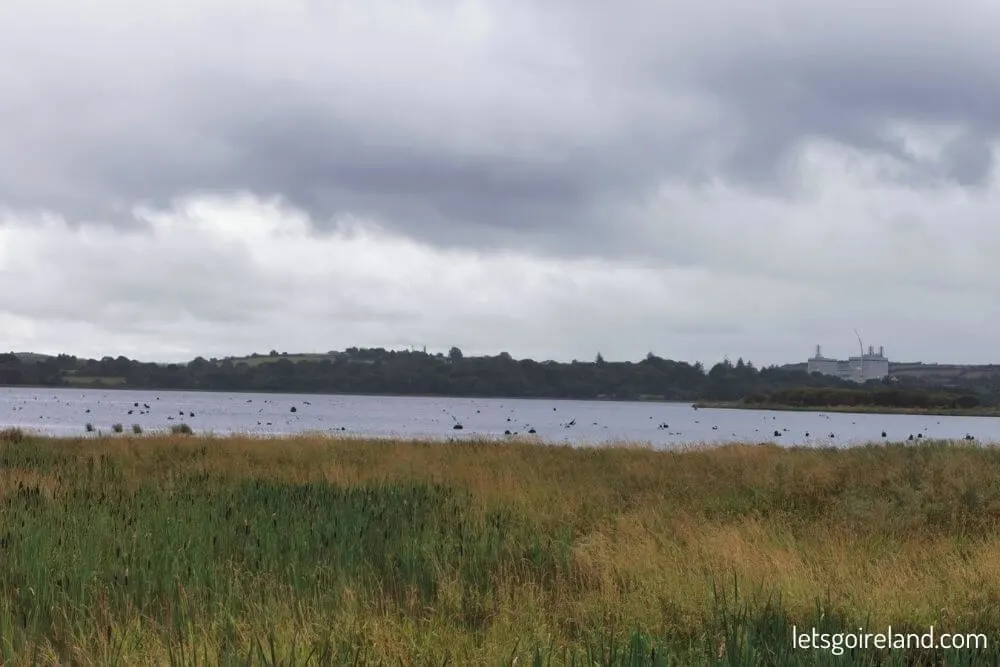
One particularly famous woodland area of Ireland is the Gearagh, near Macroom in County Cork. This is a remarkable Irish habitat and is Ireland’s last Primeval River Forest, which also happens to be the last in Europe. It is composed of species such as oak (Quercus robur), Ash, Birch (Betula spp.), Holly, Hazel and Hawthorn. The wetter areas are where Willows (Salix spp.) and Alder.
Much of the woodland was felled in the 1950s to create the Carrigadrohid Reservoir on the River Lee, which supports two hydroelectric dams. The ecological damage as a result has been immense, with roughly 60% of the woodland was lost as a result. It is now a Special Area of Conservation under EU legislation.
The remains of many very ancient tree stumps can still be seen when the water is low.
A Little known fact: The community that once lived in this area had to be relocated before the area was flooded. These people had expert knowledge of the woods and river channels. As the woods were difficult to navigate, the community were often left to their own devices by the guardí (police force) and the area became a haven for illicit poitin making.
Importance of Trees in Ireland
Place names linked to the the native trees of Ireland
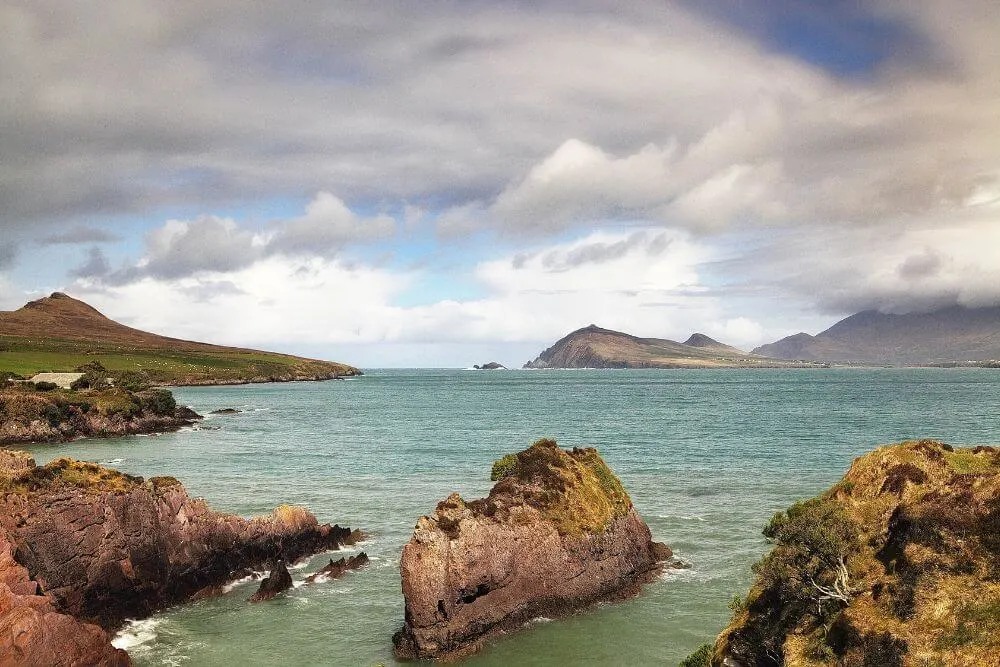
While Ireland is certainly not as forested as it once was, the names of trees from wooded areas long ago can even be still found in the place names of Ireland.
In Ireland native trees are found in the names of many different towns around the country. The most famous of these are Kildare from the Irish Cill (church) Dara (of the Oak), Durrow from Darú or Oak Plain in Irish, Glenbeigh from Gleann Beith or “Glen of the Birch”, Terenure comes from Tír an Iúir or “Land of the Yew Tree” and Smerwick in County Kerry, the Irish name Ard na Caithne comes from “Hill of the Arbutus”.
Brehon Laws – Neighborhood Laws
A legal text Breatha Comaithchesa known as the “Neighborhood Laws”, which dates back to the 8th century, outlines four different classes of trees. This classification system outlines the punishment that someone is to receive for a type of damage to a certain type of tree. Some of these fines were very hefty.
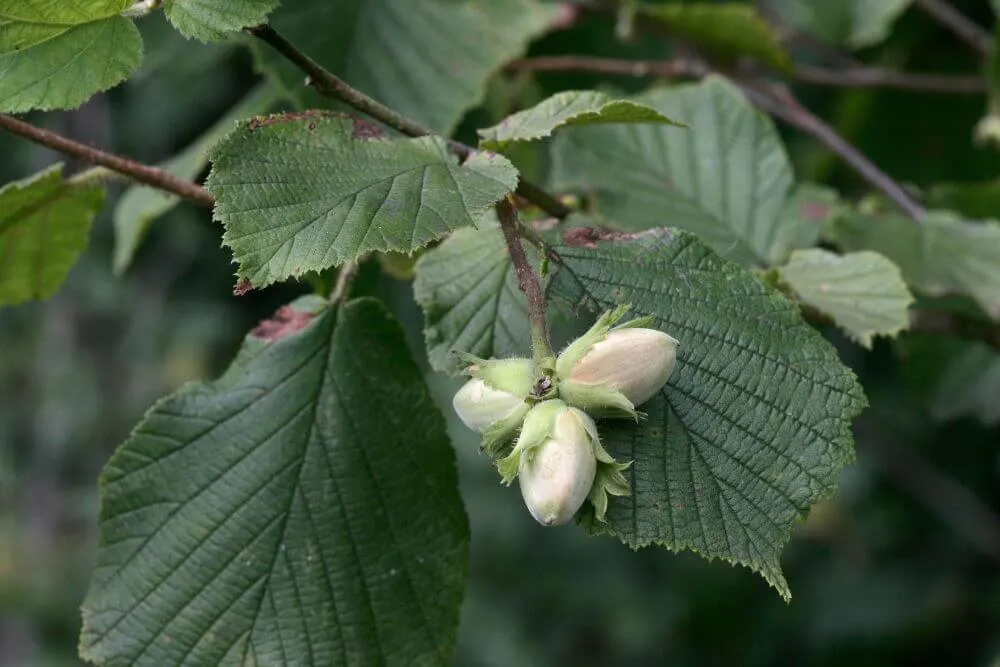
The four classifications are as follows:
Airig fedo – Nobles of the wood
- Oak (Latin Names: Quercus robur, Quercus petraea)
- Hazel (Latin Name: Corylus avellana)
- Holly (Latin Name: Ilex aquifolium)
- Yew (Latin Name: Taxus baccata)
- Ash (Latin Name: Fraxinus excelsior)
- Scots Pine (Latin Name: Pinus sylvestris)
- Wild Apple Tree (Latin Name: Malus pumila)
These tree species were considered the most valuable and the perpetrators received the most severe punishment for damaging these trees. Any offense required a penalty fine, known as a díre, which was two mich cows and a three year old heifer. On top of this fine, compensation must be paid.
For example, for minor damage such as cutting a branch, the culprit must compensate the owner with a one year heifer, but if it is a fork branch that has been damaged then a two year heifer must be paid. For base cutting damage, a one milk cow must be paid.
Aithig fhedo – Commoners of the Wood
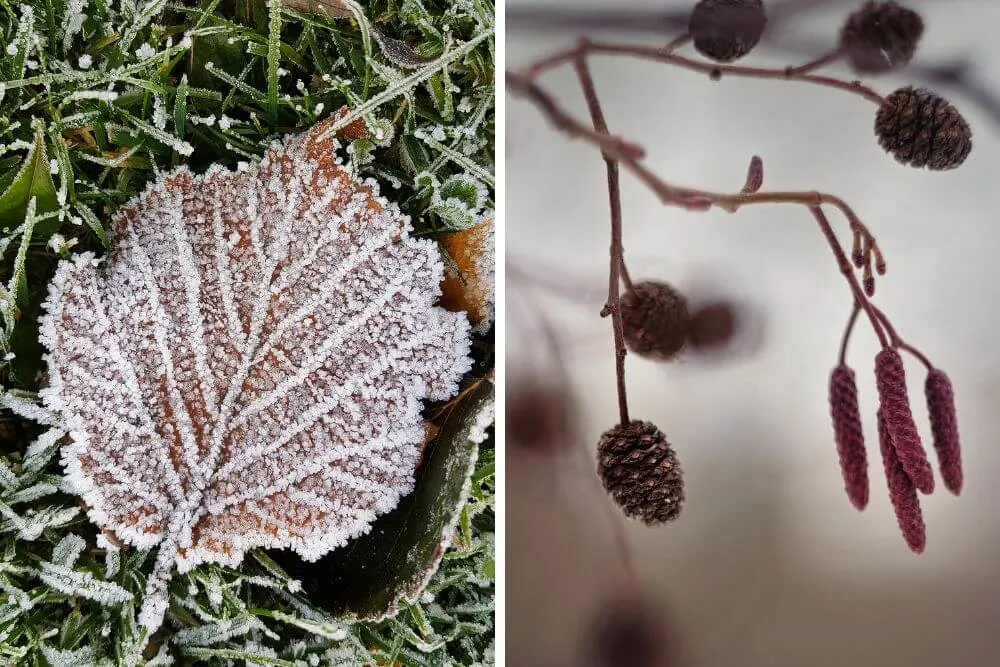
- Alder (Latin Name: Alnus glutinosa)
- Sally Willow (Latin Names: Salix caprea, Salix cenera)
- Rowan (Latin Name: Sorbus aucuparia)
- Birch (Latin Names: Betula pubescens, Betula pendula)
- Elm (Latin Name: Ulmus glabra)
- Wild Cherry (Latin Name: Prunus avium)
Fodla fedo – Lower Divisions of the Wood
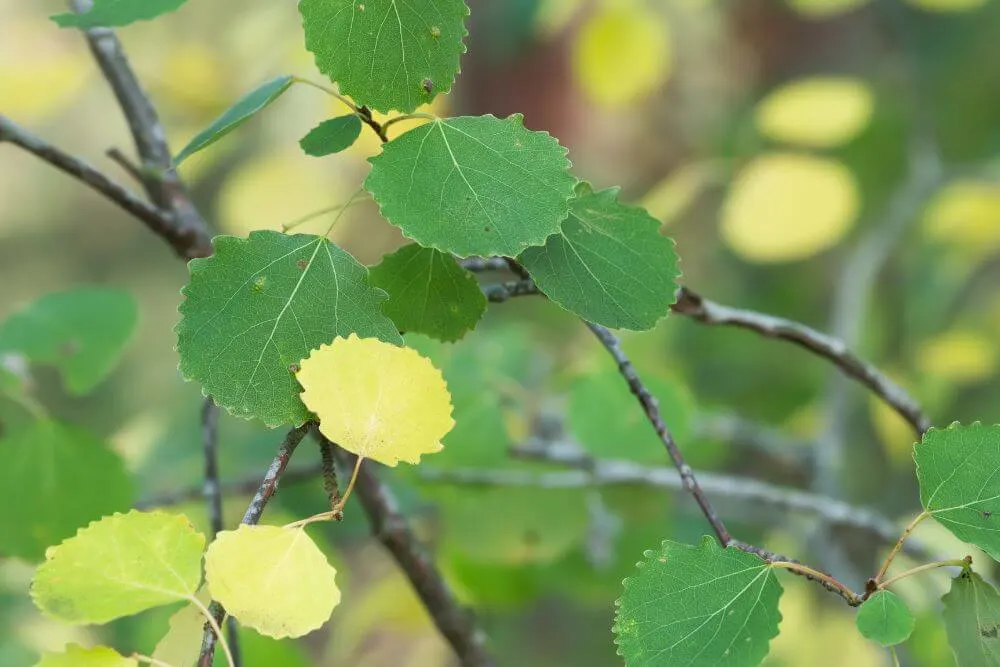
- Blathorn (Latin Name: Prunus spinosa)
- Elder (Latin Name: Sambucus nigra)
- Spindle (Latin Name: Euonymus europaeus)
- Whitebeam (Latin Name: Sorbus aria)
- Arbutus Strawberry tree (Latin Name: Arbutus unedo)
- Aspen (Latin Name: Populus tremula)
- Juniper (Latin Name: Juniperus communis)
Losa fedo – Bushes of the Wood
- Bracken (Latin Name: Pteridium aquilinum)
- Bog myrtle (Latin Name: Myrica gale)
- Furze, gorse, whin’ (Latin Names: Ulex europaeus, Ulex gallii)
- Bramble (Latin Name: Rubus fruticosus agg.)
- Heather (Latin Name: Calluna vulgaris, Erica cinerea)
- Broom (Latin Name: Sarothamnus scoparius)
- Wild rose (Latin Name: Rosa canina)
For details about the other fines and penalties, it is worth checking the pdf article by Fergus Kelly.
It was clear that the level of protection for trees was very high. Trees, not only having important spiritual connections for the Celts, but they were also extremely important for communities to provide food (acorns and hazelnuts, for example), fuel and construction materials.
Charm and Superstitions linked to Trees Native to Ireland
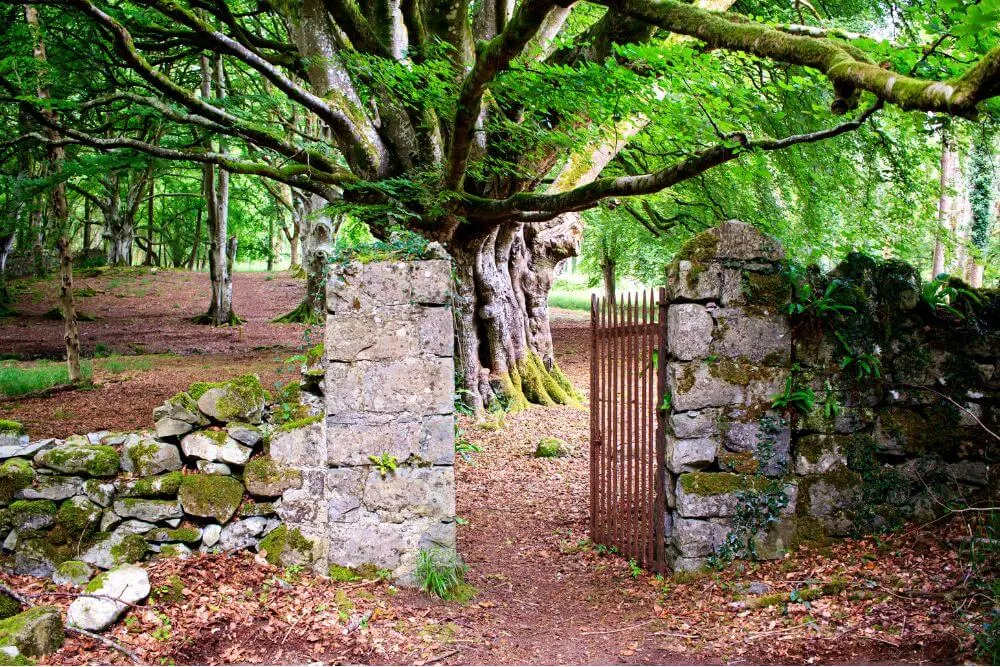
Many native species of Irish trees and shrubs are also associated with charm and superstitions.
For example, it was considered bad luck to bring the blossoms of the hawthorn into the house. Interestingly, it was recently discovered that the chemical, trimethylamine, which is found in the early stages of human tissue decay is also found in these flowers, which might give some basis for this superstition.
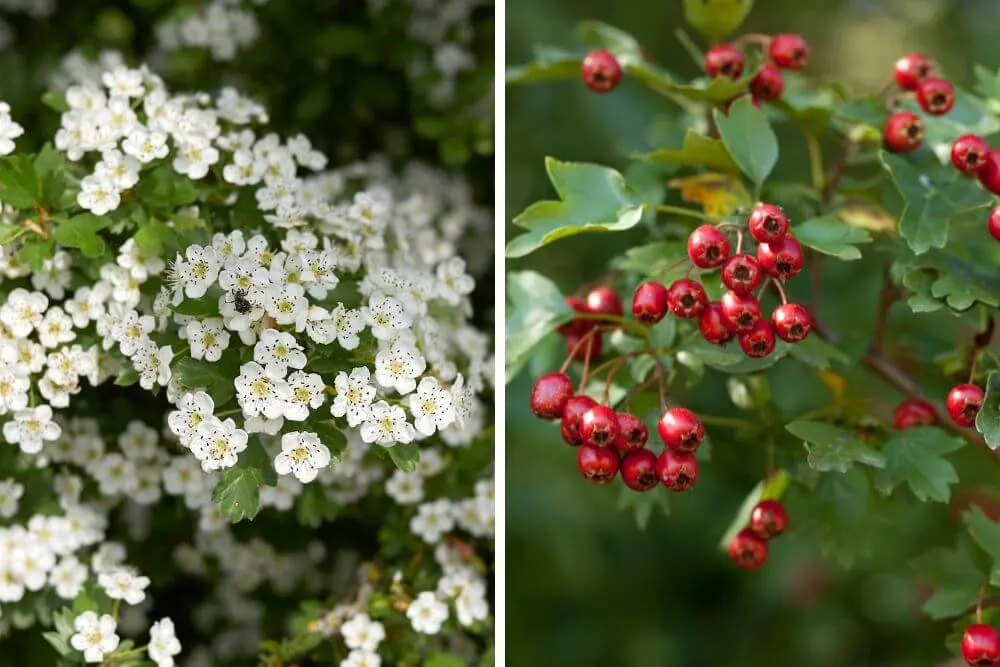
This smell tends to attract carrion insects and is reminiscent of decomposing bodies, which would have been more familiar to people long ago before the dead were sent to funeral homes.
Some stories from Irish folklore state that Hawthorn grows over pots of buried gold.
A few twigs of Rowan (Mountain Ash) tied to the tail of a cow or put around milk churns was said to keep fairies away.
There are several superstitions around Elder, including if you have one in your garden, it will keep the witches away. Never fall asleep under one, as the faeries might take you with them.
Ash is supposed to be the first tree to be hit by lightning, which may have a connection with the high water content of the tree type.
Ogham Alphabet
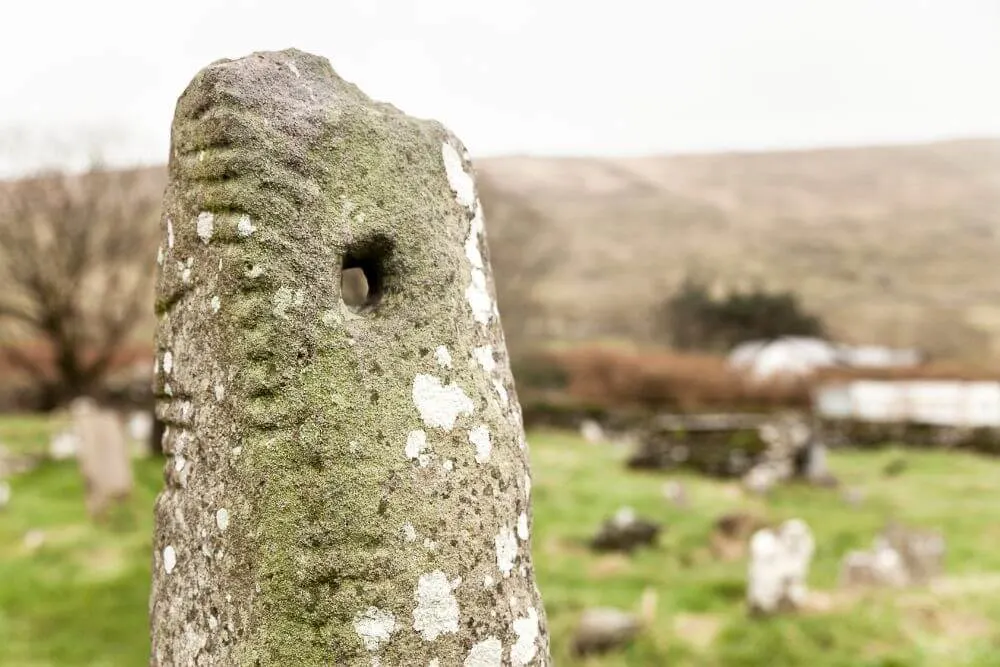
The Ogham Alphabet is sometimes known as the Celtic Tree Alphabet as some of the letter names that have survived over time are the names of trees.
This stems from information in a 7th century text Auraicept na n-Éces and also in Lebor Ogaim (Ogham Tract). Later investigations into the texts during the 17th century took this information as fact, which has given rise to the idea of the Celtic Tree Alphabet.
Later work to discover the names of the letters tried to fill in the names of the missing or forgotten names of the letters also with tree names, although there may not alway be convincing evidence to support this. More information about Ogham, including 3d ogham images can be found here.
History of Native Trees Ireland
Glaciation and Lack of Forest Cover
The ice sheets that covered Ireland in the last ice age started to retreat about 15,000 years ago and left a tundra like landscape in their wake. It was not all that long after that the first evidence of humans in Ireland has been found.
A recent study discovered evidence of human activities in Ireland, much earlier than previously thought. Roughly 12,500 years ago some person carved some lines in a bear knee, probably in the process of butchering it.
This bone was luckily discovered in the Alice and Gwendoline Cave, County Clare around the turn of the century, but only recently has this bone been rediscovered and dated to 12,500 years ago (That is 2,500 years earlier than humans were thought to have been in Ireland.)
(Update: In 2021, new evidence arose from a bone found in a cave in North Cork suggesting that humans arrived in Ireland almost 33,000 years ago!)
So when the first people arrived in Ireland, they did not arrive in a wooded landscape as previously thought. Widely distributed trees and woodlands, only occurred later.
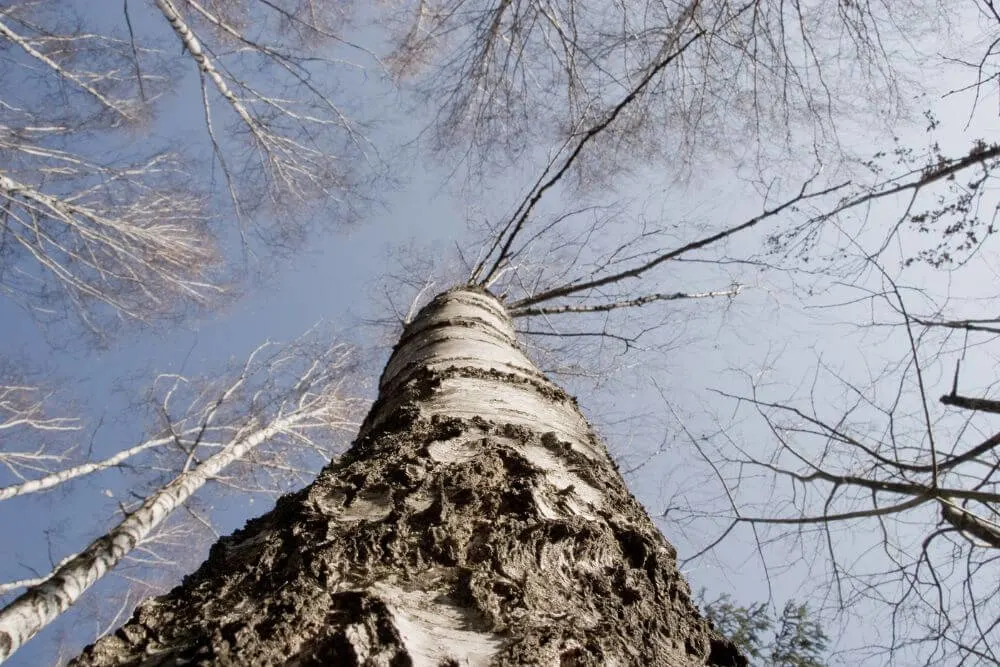
Birch woods occur early in the stages of succession and as a pioneering species were possibly one of the first trees to establish in Ireland. This tree species has light wind blown seeds that enable it to quickly establish in open ground.
Silver birch needs well drained soils, but it can survive in poor soils. Downy Birch is more tolerant of wetter areas and is the more common birch species of the two in Ireland. They are some of the preferred small native Irish trees, because they are fast growing trees in Ireland, that do not tend to grow too large and often suit as an ornamental garden tree.
Other species also established over time such as Juniper, Pine, Elm, as well as Hazel and Oak.
The cover of the forest continued to grow during the following millenia and reached a point where woods occur widely across ca. 80% of the land cover of the island.
Decline of Woodlands in Ireland
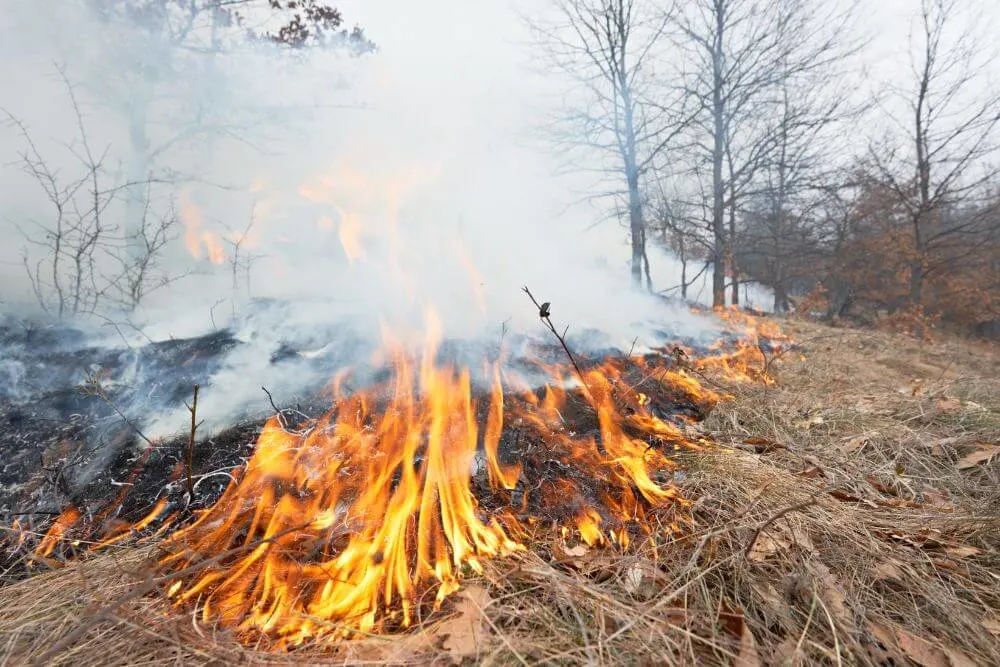
The first attempts of agriculture in Ireland probably started about 6,000 years ago. It was probably around this point that humans first started to cut down, or more likely, burn down forest areas to clear land for agriculture. From that point on the ratio of forestry to agricultural land began to decline.
This attempt to deforest the land greatly reduced the amount of wooded areas in Ireland to about 20% by 3,000 B.C.E. At this point in time, the usage of timber started to expand even more.
Iron Age in Ireland
Large amounts of charcoal were needed to support the new processes developed in the Iron Age. As the country began to develop, so too did the first infrastructure.
Timber was used to create some of the earliest roads. The remains of one such road was discovered in a bog at Corlea, County Longford.
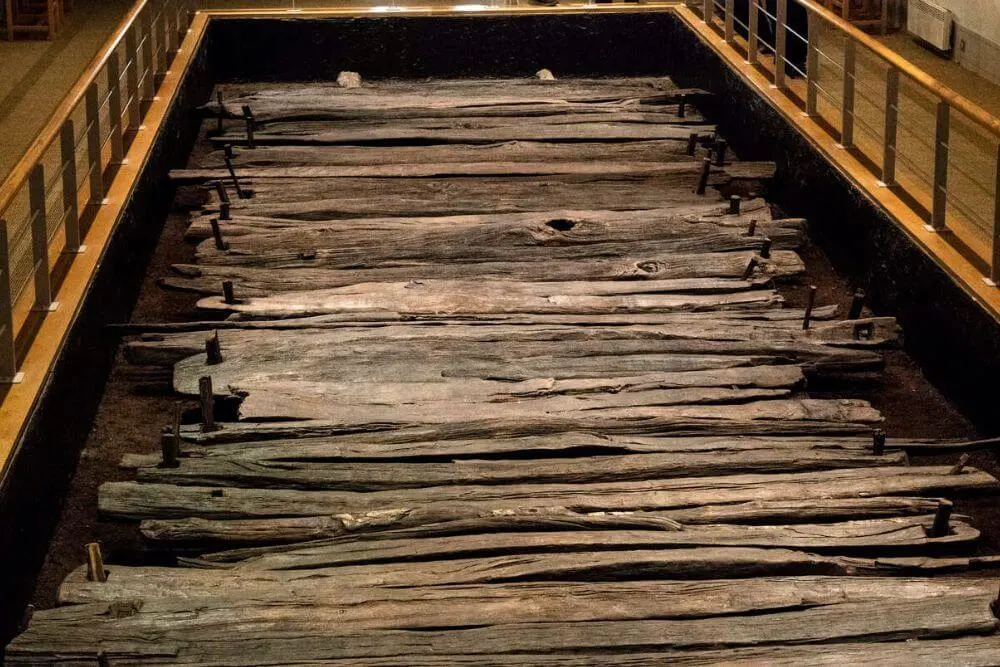
At the time that the Corlea Trackway was built in the Iron Age, the surface of this raised bog would have been a very dangerous and almost impassable place to traverse with ponds, quicksand.
The use of a timber road would allow the use of this route. About 300 trees were used in its construction. The exact purpose of this route is not certain and there are certain questions raised about whether it was used to make the bog more accessible possibly for rituals?
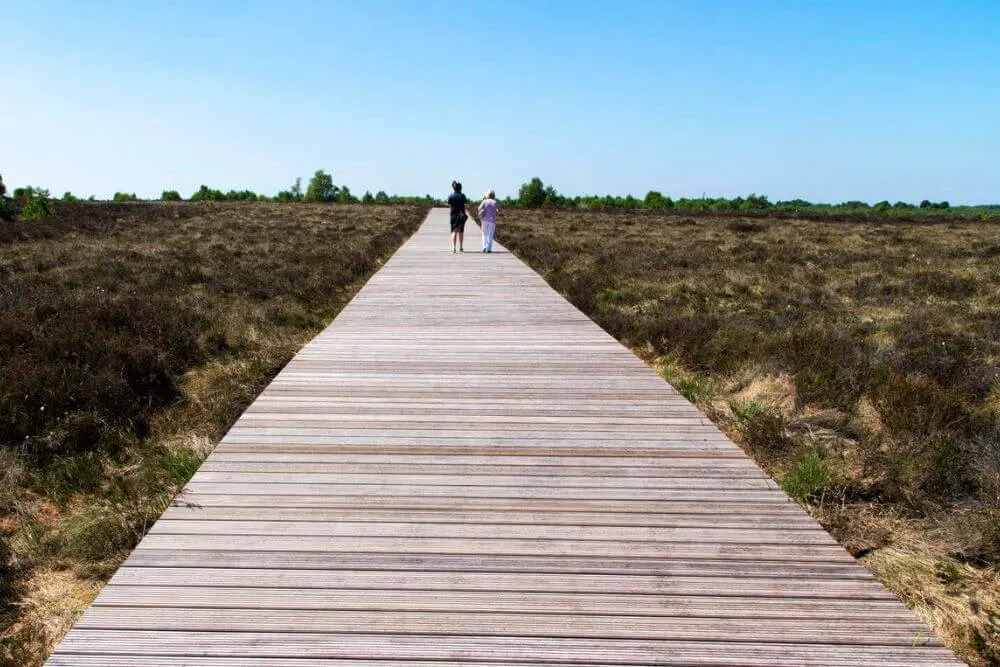
(It is possible to visit the reconstruction of this trackway or see sections of the original in the Visitor Centre.)
During the Iron Age, the demand for timber to create charcoal also increased fueling the further deforestation of Ireland, until it reached about 5% cover.
Celtic Ireland
It is known that trees played an important role in the lives of Celts. Many myths and legends, as well as popular folklore stories include trees.
Large trees were often used to mark sacred places or also the sites of royal inaugurations and were called bile.
While there were many bile, the 5 sacred guardian trees of Ireland stand out in ancient Irish history.
These are as follows:
- Eó Mugna, Moon, County Kildare (Oak)
- Bile Tortan near Tara, County Meath (Ash)
- Craeb Daithí, Faribill, County Westmeath (Ash)
- Creab Uisnigh, Uisneach, County Westmeath (Ash)
- Eó Ruis, Old Leighlin in County Carlow (Yew)

While many people may be aware of the importance of the oak for the Celts, it is interesting that only one of these great trees is thought to have been an oak, Eó Mugna (despite Eó being an ancient word for yew).
The Bile Tortan, Craeb Daithí and Creab Uisnigh were all ash trees and the Eó Ruis was a yew.
There are several incidents of sacred trees or trees at auguration sites being cut down by rivals. The sacred tree at Magh Adhair, County Clare is said to have been uprooted. This is the famous site where Brian Ború, the High King of Ireland, was crowned.
Medieval Ireland
The early medieval period saw the development of early towns. Timber was an essential building material that enabled the expansion of the towns during this time and because of this the remaining forested areas in Ireland continued to decline.
The sacred importance of trees that held so steadfast in the generations that lived on the island of Ireland underwent a rapid change with the arrival of the Norman.
For the Normans, the wooded areas of Ireland were a resource that could be used and profited from. It was during this time that the export trade in Irish timber began to flourish. For example, it is known that Irish oak trees were used to support the roof in Salisbury Cathedral.
The forests continued to decline until roughly around the time of the Black Death, when the demand for timber fell throughout Europe.
Irish Plantations and the Famine
The Plantations in Ireland between the 15th and 17th centuries followed the approach of the Normans in maximizing the use of the woodland areas for commercial purposes, which resulted in even more deforestation. Demand for timber rose significantly after The Great Fire of London in 1666, when efforts to rebuild the city got underway.
By around the time of the famine in the 1840s, some historical records state that trees were almost completely absent from the landscape in Ireland, with the exception being in the manicured, ornamental gardens of the private domense.
Current Status
Ireland is still known for its forty shades of green, which now covered roughly about 11% of the land cover. Unfortunately a large part of this forestry cover is made up of monoculture forest of non-native sitka spruce, which has little or no benefit to biodiversity and has many negative knock-on effects to the environment.
Do you have Irish Roots?
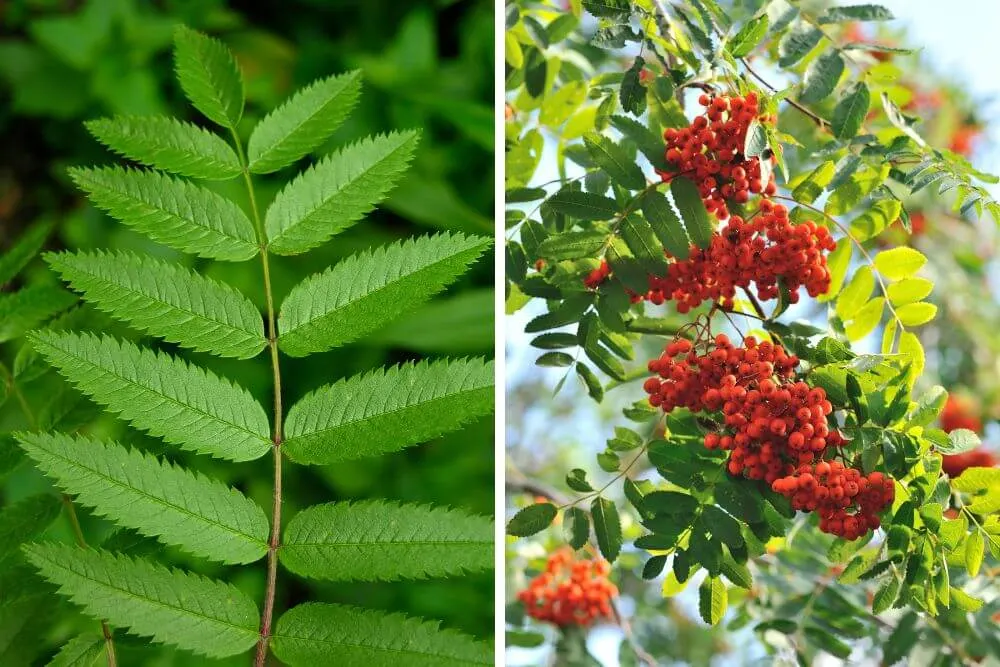
Can you trace your ancestral roots back to Ireland? Perhaps you would like to support Irish Native Woodlands and help to plant native Irish trees?
If so, one idea would be to sponsor a tree of Irish stock to help support the recovery of native Irish woodlands. It is a thoughtful gift to mark an important occasion such, births, birthdays, marriages or as a memorial gift that will last for decades and keep giving back to local Irish biodiversity.
For those interested, you can find out more information from the following not for profit organizations here:
FAQs
What is Ireland’s most common tree?
Ash is thought to be the most common tree type in Ireland. It is often found in hedgerows, as well as in wooded areas.
What are the most common Irish trees?
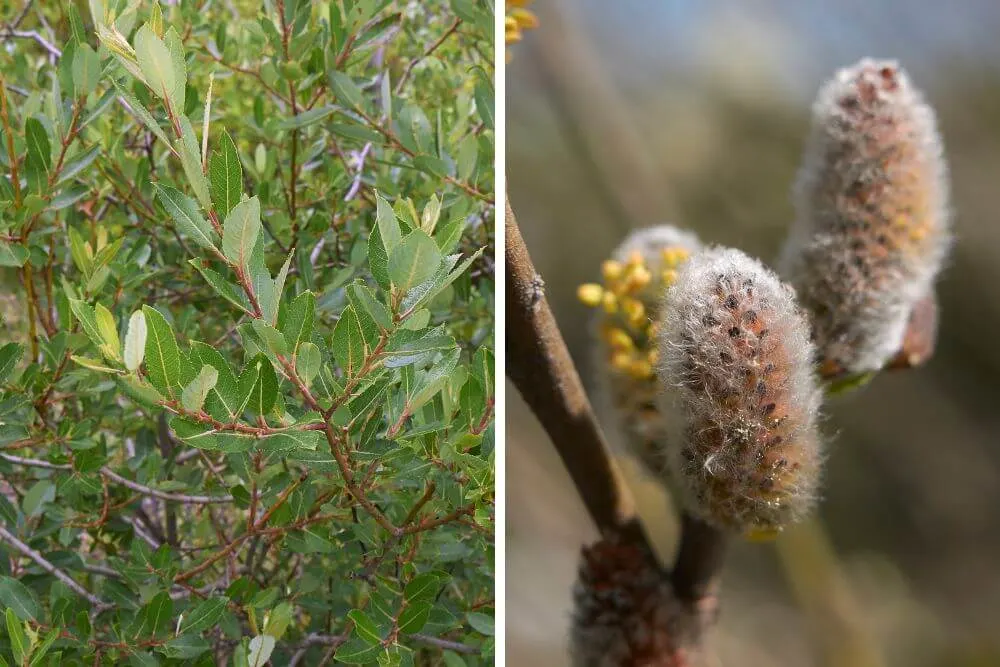
In addition to ash, the other most common trees in Ireland include Oak, Hazel, Birch, Rowan, Scots Pine and Willow.
How can I identify native Irish tree leaves?
The Tree Council of Ireland has a handy Tree Identification Swatch that can help you learn the trees and shrubs commonly found in Ireland. This is a good (old school!) place to start if you want to try Irish leaf identification on the go.
What is that national Tree of Ireland?
The Sessile Oak is the national Tree of Ireland. This was only declared in 1990, by the then Taoiseach Charlie Haughey. One of Ireland’s oldest trees, the King Tree (County Offaly) is a sessile oak.
What are the seven sacred trees?
The seven sacred trees were revered by the Celts. These are Oak, Ash, Apple, Hazel, Alder, Elder and Yew. They often feature in Celtic myths and legends.
Interested in more native Irish plants? Check out Irish Flowers or Animals and Plants in the Burren next!

(Irish Nature Expert and Celtic Enthusiast from Ireland)
Emer Walker, founder of LetsGoIreland.com, is a Cork native with profound expertise in Irish nature and ecology. Holding a PhD in Restoration Ecology and backed by extensive research in ecological sciences, she’s delved deep into Ireland’s natural wonders, from its rugged landscapes to its serene beaches. Emer’s passion also encompasses Celtic art and traditions. As a true authority on Ireland’s natural and cultural heritage, she invites readers through LetsGoIreland.com to immerse themselves in the authentic Irish experience.
